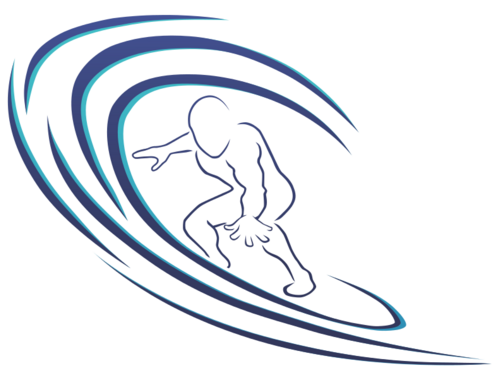Regenerative Orthopedics
Using science and technology to stimulate the healing and rebuilding of bones, ligaments, tendons, cartilage, and muscles.
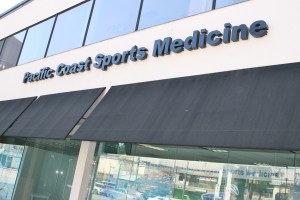 Regenerative medicine is one of the most exciting frontiers in medical science today. It is the science of regenerating tissues of the human body that are injured or diseased and, in most cases, chronically or permanently damaged. In 1992, Leland Kaiser introduced the term “regenerative medicine,” speculating it would “attempt to change the course of chronic diseases and in many instances will regenerate tired and failing organ systems.” Pacific Coast Sports Medicine was opened in 2012 to bring together innovative minds and experienced clinicians interested in a collaborative effort to apply regenerative medical technology aimed at the musculoskeletal system.
Regenerative medicine is one of the most exciting frontiers in medical science today. It is the science of regenerating tissues of the human body that are injured or diseased and, in most cases, chronically or permanently damaged. In 1992, Leland Kaiser introduced the term “regenerative medicine,” speculating it would “attempt to change the course of chronic diseases and in many instances will regenerate tired and failing organ systems.” Pacific Coast Sports Medicine was opened in 2012 to bring together innovative minds and experienced clinicians interested in a collaborative effort to apply regenerative medical technology aimed at the musculoskeletal system.
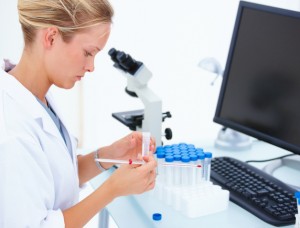 Regenerative medicine, as it applies to orthopedics, is groundbreaking, often enabling athletes and non-athletes alike to recover with better outcomes from musculoskeletal injuries and disabilities. Older treatments might otherwise be surgically invasive with lower likelihood of long-term success. You can also rest assured that if surgery is indeed the best option for your condition, our surgeons are trained and experienced with the latest surgical techniques and rehabilitation.
Regenerative medicine, as it applies to orthopedics, is groundbreaking, often enabling athletes and non-athletes alike to recover with better outcomes from musculoskeletal injuries and disabilities. Older treatments might otherwise be surgically invasive with lower likelihood of long-term success. You can also rest assured that if surgery is indeed the best option for your condition, our surgeons are trained and experienced with the latest surgical techniques and rehabilitation.
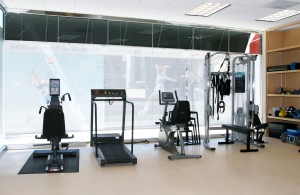 At Pacific Coast Sports Medicine we use advanced regenerative techniques, such as stem cell therapy, to stimulate the rebuilding and healing of muscles, ligaments, tendons, bone, and cartilage. Prolotherapy and platelet rich plasma (PRP) therapy are two other forms of regenerative techniques that can be used to catalyze, or trigger, the body’s natural healing processes. Prolotherapy involves injections of highly concentrated sugar to irritate the area and encourage an inflammatory response, releasing chemicals called growth factors to repair the injured tissue. In PRP therapy, growth factors are extracted from the patient’s own blood, processed, and injected into the damaged tissue.
At Pacific Coast Sports Medicine we use advanced regenerative techniques, such as stem cell therapy, to stimulate the rebuilding and healing of muscles, ligaments, tendons, bone, and cartilage. Prolotherapy and platelet rich plasma (PRP) therapy are two other forms of regenerative techniques that can be used to catalyze, or trigger, the body’s natural healing processes. Prolotherapy involves injections of highly concentrated sugar to irritate the area and encourage an inflammatory response, releasing chemicals called growth factors to repair the injured tissue. In PRP therapy, growth factors are extracted from the patient’s own blood, processed, and injected into the damaged tissue.
 Non-invasive technologies and therapies are frequently used in our clinic to stimulate the body’s natural regenerative capabilities such as: laser therapy, chiropractic medicine, physical therapy, lymphedema treatment, VAX-D spinal decompression, massage therapy, acupuncture, and nutritional therapy. Other novel technologies unique to our clinic include EPAT Acoustic Wave Therapy and the Hako-Med Bioelectric Therapy. Many times these therapies are used in combination for their additive effects beyond a single therapy alone. This is especially advantageous because of their non-invasive nature, allowing for a faster recovery that is less painful yet more effective. Our physicians may also recommend the best protocol for your individual condition is to use the non-invasive therapies as adjuncts to injections, such as stem cell therapy.
Non-invasive technologies and therapies are frequently used in our clinic to stimulate the body’s natural regenerative capabilities such as: laser therapy, chiropractic medicine, physical therapy, lymphedema treatment, VAX-D spinal decompression, massage therapy, acupuncture, and nutritional therapy. Other novel technologies unique to our clinic include EPAT Acoustic Wave Therapy and the Hako-Med Bioelectric Therapy. Many times these therapies are used in combination for their additive effects beyond a single therapy alone. This is especially advantageous because of their non-invasive nature, allowing for a faster recovery that is less painful yet more effective. Our physicians may also recommend the best protocol for your individual condition is to use the non-invasive therapies as adjuncts to injections, such as stem cell therapy.
As part of our Regenerative Orthopedics mission at Pacific Coast Sports Medicine, we have developed a unique, scientifically-based program for the prevention and treatment of osteoporosis. The bioDensity osteogenesis system is the cornerstone of our program as it uses safe, bone-stimulating loads to the musculoskeletal system to induce bone regeneration. Adjunctive therapies have been developed with the Power Plate whole body vibration, Korebalance, nutritional therapy, laboratory analysis, and fracture risk assessment. With this innovative osteoporosis program many patients are able to avoid taking pharmaceuticals with their inherent risks and side effects.
Our cutting-edge regenerative orthopedic procedures are autologous, meaning we use the patient’s own tissue, such as their own stem cells, to promote the regeneration and rejuvenation at the site of injury. We never use embryonic tissue or tissue from another individual. This essentially eliminates unwanted immune responses from occurring (3). At the same time it also activates the body’s own desirable immune reactions.
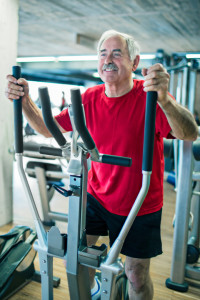 If stem cell therapy is determined to be an option for your condition, the physician will harvest your stem cells from your own adipose tissue, as opposed to bone marrow. Our procedure is much simpler, less invasive, less painful, and potentially yields higher concentrations of stem cells and growth factors. Current research literature supports our regenerative medicine technique of utilizing adipose-derived stem cells (ADSCs) in order to regenerate bone and cartilage:
If stem cell therapy is determined to be an option for your condition, the physician will harvest your stem cells from your own adipose tissue, as opposed to bone marrow. Our procedure is much simpler, less invasive, less painful, and potentially yields higher concentrations of stem cells and growth factors. Current research literature supports our regenerative medicine technique of utilizing adipose-derived stem cells (ADSCs) in order to regenerate bone and cartilage:
- Three months after ADSC treatment, patients with knee osteoarthritis and hip osteonecrosis had clear cartilage regeneration and bone formation, as well as improved signs and symptoms (4)
- ADSCs were shown to be more effective than bone marrow-derived stem cells in elder patients with osteoporosis, allowing increased regeneration and engineering of bone (1)
- The transplantation of ADSCs increased the production and activation of osteoblasts and osteoclasts (cells responsible for the formation, maintenance, and repair of bone) in osteoporotic patients (2)
The innovative research and practice of regenerative medicine gives our physicians the potential to effectively rebuild damaged tissues thereby giving our patients the potential for the restoration and enhancement of mobility and functional movement.
Resources:
- Chen HT, Lee MJ, Chen C-H, Chuang SC, Chang LF, Ho ML, Hung SH, Fu YC, Wang YH, Wang HW, Wang GJ, Kang L, Chang JK. Proliferation and differentiation potential of human adipose-derived mesenchymal stem cells isolated from elderly patients with osteoporotic fractures. J Cell Mol Med. 2012;16(3):582-592.
- Lee K, Kim H, Kim JM, Kim JR, Kim KJ, Kim YJ, Park SI, Jeong JH, Moon YM, Lim HS, Bae DW, Kwon J, Ko CY, Kim HS, Shin HI, Jeong D. Systematic transplantation of human adipose-derived stem cells stimulates bone repair by promoting osteoblast and osteoclast function. J Cell Mol Med. 2011;15(10):2082-94.
- Melief SM, Zwaginga JJ, Fibbe WE, Roelofs H. Adipose tissue-derived multipotent stromal cells have a higher immunomodulatory capacity than their bone marrow-derived counterparts. Stem Cells Transl Med. 2013;2(6):455-463.
- Pak J. Regeneration of human bones in hip osteonecrosis and human cartilage in knee osteoarthritis with autologous adipose-tissue derived stem cells: a case series. J Med Case Rep. 2011;5:296.
- Schmitt A, Van Griensven M, Imhoff AB, Buchmann S. Application of stem cells in orthopedics. Stem Cells Int. 2012;2012:394962.
Please see our webpage on STEM CELL THERAPY
To learn more about stem cell therapy, please visit the following websites:
Cell Surgical Network
California Stem Cell Treatment Center
Stem Cells in Orthopedics–NIH
